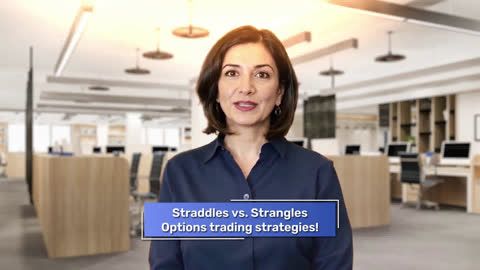Freak trades are rare and abnormal stock market occurrences that leave traders puzzled and often concerned. These trades take place at prices far removed from the prevailing market rates and are typically triggered by unforeseen factors such as technical glitches, manual errors, or low market liquidity. For traders, understanding freak trades is essential to navigating the complexities of the financial markets.
Freak Trades
A freak trade is a sudden, brief price spike caused by human or technical error. It can trigger stop-loss orders and cause sharp, unexpected fluctuations in the market.
Introduction
What are Freak Trades?
Freak trades refer to transactions in the stock market that occur at prices significantly different from the prevailing market rates. These trades are often the result of anomalies such as technical glitches, fat-finger errors, or a lack of liquidity in the market.
For instance, a stock trading steadily at Rs. 500 might suddenly execute a trade at Rs. 50 or Rs. 5,000. While rare, these occurrences can have significant implications, especially for traders who rely on stop-loss orders or automated trading strategies.
Freak trade and trigger in Stop loss Market orders
Freak trades can have a direct impact on stop-loss market orders. A stop-loss order is designed to limit a trader’s loss by automatically selling a stock when it reaches a predetermined price. However, during a freak trade, the price of a stock can abruptly drop or spike, triggering the stop-loss order at an unfavourable price.
For example, if you set a stop-loss order to sell your stock at Rs. 495, a freak trade might cause the stock’s price to momentarily drop to Rs. 100, leading to the execution of your order at this unexpected price point.
To minimise such risks, traders can use advanced stop-loss strategies and tools available on platforms like Bajaj Broking. These tools allow you to set conditional triggers and monitor real-time market movements, ensuring better control over your trades.
How Do Freak Trades Happen?
Freak trades occur due to a combination of factors, including:
- Technical glitches: Errors in trading platforms or stock exchanges can lead to price mismatches.
- Fat-finger errors: Manual mistakes, such as entering the wrong price or quantity, can result in abnormal trades.
- Low liquidity: In markets with limited buyers or sellers, even small trades can cause significant price fluctuations.
- Algorithmic trading: Automated trading systems may execute trades based on flawed logic or erroneous data, contributing to freak trades.
What is a Fat Finger Trade?
A fat-finger trade refers to a manual error made by a trader when entering an order. This could involve typing an incorrect price or quantity, leading to unintended and often significant market consequences. For example, a trader intending to sell 1,000 shares at Rs. 500 might accidentally enter an order to sell 10,000 shares at Rs. 50.
Such errors can disrupt market equilibrium and lead to freak trades.
Conclusion
Freak trades, while rare, can have a profound impact on traders and the overall market. Understanding their causes—whether technical glitches, fat-finger errors, or low liquidity—is crucial for mitigating risks. By adopting proactive strategies and leveraging advanced trading tools, you can navigate these anomalies with greater confidence.
Investments in securities markets are subject to market risks. Please read all scheme-related documents carefully before investing. Past performance is not indicative of future returns. Bajaj Broking does not provide investment advisory services.
Frequently Asked Questions
To avoid freak trades, ensure that you validate all order details before placing them. Avoid using stop-loss market orders during periods of high volatility and monitor market conditions closely. Platforms like Bajaj Broking provide real-time updates and advanced trading tools to help you minimise risks associated with freak trades.
An example of a freak trade could be a stock trading at Rs. 1,000 suddenly executing a trade at Rs. 100 due to a fat-finger error or low liquidity. Such anomalies are rare but can have significant implications for traders. Bajaj Broking offers research-backed solutions to help you mitigate the impact of such events.
Abnormal price trades occur due to factors such as market volatility, technical glitches, or manual errors. These trades often deviate significantly from the prevailing market price. By using Bajaj Broking’s compliance-friendly and robust trading ecosystem, you can stay informed and reduce the likelihood of encountering such trades.
Related articles
Related videos
Bajaj Finserv App for All Your Financial Needs and Goals
Trusted by 50 million+ customers in India, Bajaj Finserv App is a one-stop solution for all your financial needs and goals.
You can use the Bajaj Finserv App to:
- Apply for loans online, such as Instant Personal Loan, Home Loan, Business Loan, Gold Loan, and more.
- Explore and apply for co-branded credit cards online.
- Invest in fixed deposits and mutual funds on the app.
- Choose from multiple insurance for your health, motor and even pocket insurance, from various insurance providers.
- Pay and manage your bills and recharges using the BBPS platform. Use Bajaj Pay and Bajaj Wallet for quick and simple money transfers and transactions.
- Apply for Insta EMI Card and get a pre-approved limit on the app. Explore over 1 million products on the app that can be purchased from a partner store on easy EMIs.
- Shop from over 100+ brand partners that offer a diverse range of products and services.
- Use specialised tools like EMI calculators, SIP Calculators
- Check your credit score, download loan statements and even get quick customer support—all on the app.
Download the Bajaj Finserv App today and experience the convenience of managing your finances on one app.
Download App
Now request money from your friends and family and make instant payments.

- 1. Apply for Loans: Choose from personal, business, gold loans and more
- 2. Transact: Pay utility bills, use UPI, get FASTag and more
- 3. Shop: Buy over 1 million products on No Cost EMI
- 4. Invest: Buy stocks, mutual funds and invest in FD


















